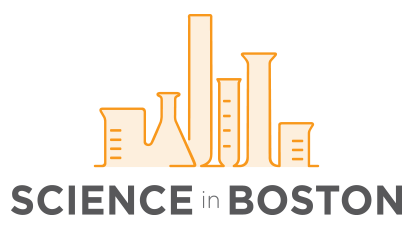This week we profile a recent publication in Cell Reports from the
laboratory of Dr. Galit Lahav (pictured, center) at Harvard Medical School.
Core authors include: Michael Tsabar (top left), Caroline Mock (bottom left), Ashwini Jambhekar (top right), Veena Venkatachalam (bottom right).
Can you provide a brief overview of your lab’s current research focus?
Our lab’s goal is to determine why individual human cancer cells often show different responses to the same treatment, and to identify new therapies that will increase the efficacy of anti-cancer drugs. To this end, we develop computational and quantitative experimental approaches to study the fate and behavior of human cells in disease and health at the single-cell level. We focus on the tumor suppressor protein p53, perhaps the most important gene protecting human cells against the development of cancer. Most studies on p53 use bulk methods that average the responses of many cells together. We pioneered new approaches for quantifying the behavior of p53 in single living cells. One function of p53 is to detect and respond to DNA damage that may lead to cancer-causing mutations. We found that information about the nature and extent of DNA damage is transmitted through the pattern of p53 over time (p53 dynamics), not the absolute level of the protein, and that the dynamic behavior of p53 determines how each cell responds to radiation and anti-cancer drugs.
We are now seeking to understand how p53 dynamics regulates the choice between different gene expression programs; how p53 dynamics can be modulated for therapeutic effects; and how p53 dynamics and cellular outcomes are influenced by interactions within a 3D cellular architecture, with other cell types and molecules in an in vivo environment, and with the immune system. We are working with researchers at Massachusetts General Hospital and the Ludwig Center for Cancer Research to translate our findings into more clinical settings.
What is the significance of the findings in this publication?
In response to DNA damage induced by ionizing irradiation, p53 undergoes oscillatory dynamics with a set frequency and amplitude, and this dynamical pattern is associated initially with cell-cycle arrest, and eventually DNA damage repair or senescence. In our current study, we have found that a subpopulation of cells can escape arrest several days following irradiation, even in the presence of DNA damage. This escape, which occurs in both cancerous and non-transformed cell-lines, results in switching of p53 oscillations to sustained p53 levels that are induced by Caspase-2 – PIDDosome activation, which degrades the p53 inhibitor MDM2. Other than describing a new pattern of p53 dynamics and its mechanism of regulation, we propose that by leading to sustained elevation of p53 levels, the Caspase-2 – PIDDosome could act as a “fail-safe” when the canonical DNA damage checkpoint fails to maintain cell-cycle arrest following irradiation.
What are the next steps for this research?
This study proposes several avenues for future research. First, it will be important to determine the long-term fates of cells that switch from oscillatory to sustained dynamics in different types of cancerous and non-cancerous cells. Additionally, we plan to test if the elevated p53 response in switching leads to changes in transcription of p53 targets, using an orthogonal approach that will allow monitoring of both p53 dynamics and transcriptomics in the same cells. We observed that switching cells exhibit micronuclei, raising the possibility that the innate immune response, which can be activated by micronuclei, may be induced to clear these abnormal cells. We aim to investigate the interactions of switching cells with immune cells in vitro and in vivo.
This work was funded by:
This work was supported by National Institutes of Health (NIH) grants R01 GM 083303 and R01 GM 116864. Michael Tsabar was supported by NIH grant RM1HG006193 and the American Cancer Society—New England Pay-if Group postdoctoral fellowship, PF18-126-01-DMC. Jose Reyes was supported by CONACyT/Fundacion Mexico en Harvard grant 404476) and Harvard graduate merit fellowship. Trudy G. Oliver was supported by American Cancer Society (ACS) grant RSG-13-300-01-TBG.

